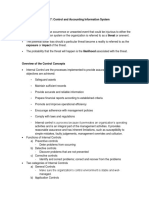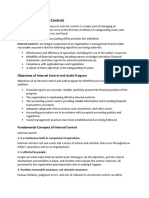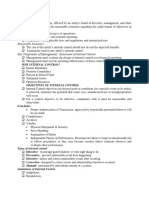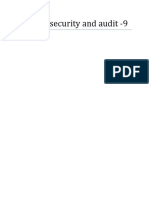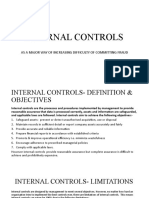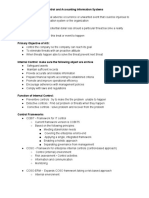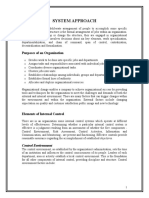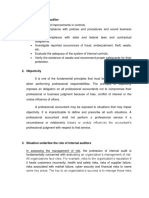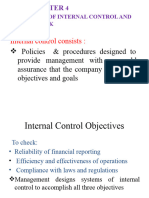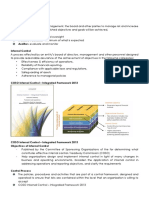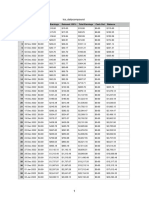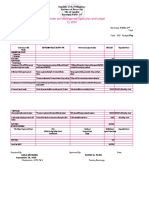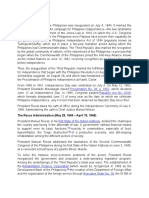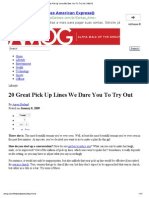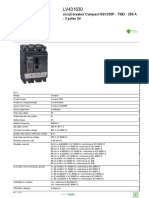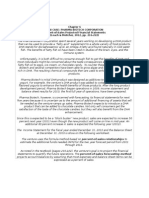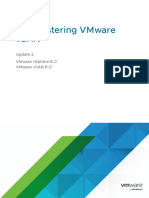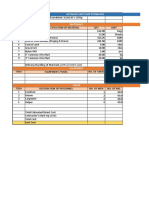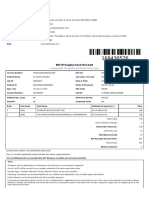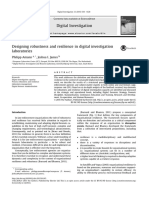0% found this document useful (0 votes)
14 views6 pagesOverview of Control Concepts
The document provides an overview of internal control concepts, emphasizing their importance in safeguarding assets, ensuring accurate financial information, and promoting operational efficiency. It classifies internal controls into categories such as preventive, detective, and corrective controls, and outlines key control activities like proper authorization, segregation of duties, and adequate documentation. Additionally, it discusses the control framework, including risk assessment and response strategies to manage potential risks effectively.
Uploaded by
Geremu TadCopyright
© © All Rights Reserved
We take content rights seriously. If you suspect this is your content, claim it here.
Available Formats
Download as DOCX, PDF, TXT or read online on Scribd
0% found this document useful (0 votes)
14 views6 pagesOverview of Control Concepts
The document provides an overview of internal control concepts, emphasizing their importance in safeguarding assets, ensuring accurate financial information, and promoting operational efficiency. It classifies internal controls into categories such as preventive, detective, and corrective controls, and outlines key control activities like proper authorization, segregation of duties, and adequate documentation. Additionally, it discusses the control framework, including risk assessment and response strategies to manage potential risks effectively.
Uploaded by
Geremu TadCopyright
© © All Rights Reserved
We take content rights seriously. If you suspect this is your content, claim it here.
Available Formats
Download as DOCX, PDF, TXT or read online on Scribd
/ 6

